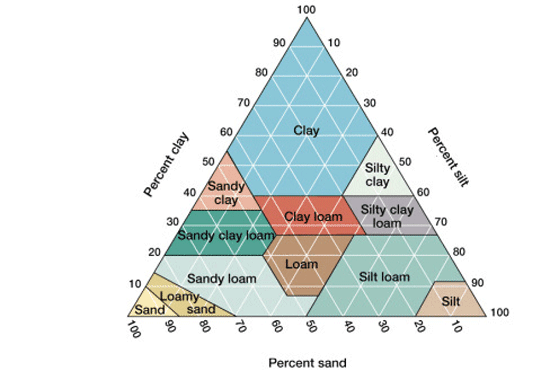Washing and Determining the pH and Soil Components % (9/10/18)
Rationale: To perform a washing to separate the phages and bacteria in which the lysate will be divided into what will become enriched and direct isolation. To also determine the pH, % sand, % silt, and % clay
Materials:
- 15 mL conical vial
- 10 mL of LB broth
- 20 mL of DI water
- Soil Dispersion Liquid
- Petri Dish
- Syringe and Filters
- Microcentrifuge tubes
Procedure:
- Add 2 mL of Soil Sample 2 to a 15 mL conical vial.
- Add LB broth up to the 12 mL mark in the vial.
- Vortex the vial for five minutes, shake the vial for another five, and vortex the vial for the last five minutes.
- While vial is on the vortex, add 10 mL of soil into a Falcon tube.
- Add DI water up to the 30 mL mark in the Falcon tube.
- Add three drops of soil dispersion liquid.
- Shake the tube for 30 seconds.
- Let the tub sit for 30 seconds.
- The 15 mL vial now goes into the centrifuge at 10,000 g for 5 minutes.
- While the 15 mL vial is in the centrifuge, weigh a petri dish then add soil and weigh it.
- Set aside the petri dish with soil under a vacuum hood for 48 hours
- FIlter the Soil Sample 2 supernatant using a syringe.
- Use as many filters as needed to filter the supernatant.
- Pour the lysate into a microcentrifuge tube labeled “Filtered Enriched 2.”
- Take some soil from Soil Sample 2 and put it in a small glass vial to measure the pH.
- Add some DI water and shake.
- After shaking, take an inch of pH paper and put it in the mixture for about 45 seconds.
- Take out the paper and determine the pH based on the color of the water at the top of the vial.
- Dispose of the contents of the vial and clean it thoroughly.
Results and Analysis:
- The weight of the Petri Dish: 7.19 g
- The weight of the Petri Dish and soil: 11.80 g
- pH of soil: 7.6
- I had a lot of difficulty in filtering my supernatant using the syringe resulting in a shortage of lysate.
Soil Sample 2 immediately after shaking the Falcon Tube
Supernatant before filtering
Determination of pH by the color of the water
Conclusion and Future Plans:
- To determine pH, remove a small sample of the soil sample and place it into a vial. Fill the vial up with water all the way to the rim. Shake the vial until the two components are evenly mixed. Take a piece of pH paper and determine the pH of the soil by using the color chart that is provided. Another procedure was to take some soil from Soil Sample 2 bag and to place it on a petri dish under a vacuum hood. The purpose is to determine the % water after 48 hours. The last procedure that was conducted is the filtering of the supernatant. Using a syringe and many filters, filtering the supernatant was a bit difficult and long due to the debris that was restricting the flow of the phages through the filter. Remove all the supernatant from the conical vial and filter for the phages which would go into a microcentrifuge tube labeled “Filtered Enriched 2.”
- In the future, I plan to conduct a spot test to check for phages.

















 (https://samanthaapes.weebly.com/apes-in-a-box-soil-pyramid.html)
(https://samanthaapes.weebly.com/apes-in-a-box-soil-pyramid.html)